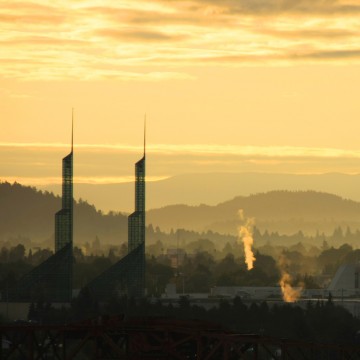Portland Is Gentrifying Faster Than Any Other City in America
Friday, February 06, 2015

Governing Magazine analyzed census data from 2000 and 2013 in America’s 50 largest cities, to see which tracks saw the most gentrification. The median home values, growth rates, and number of adults with bachelors’ degrees were used to measure if an area gentrified.
Portland saw 36 tracts gentrify, 58.1 percent of all eligible areas, mostly in the Northeast. The other two leading cities were Washington, D.C. and Minneapolis, who saw increases of 51.9 percent and 50.6 percent respectively.
“This didn’t happen overnight, it’s not just one person or two. This is city policy and city leaders,” said Victor Merced, executive director for Hacienda CDC. “Unless we see more affordable housing in the city, it’s going to be a lot more challenging.”
Portland Neighborhoods
Neighborhoods in East and Northeast Portland have been attracting residents amid Portland’s high property prices and competitive rental market. The city’s low prices, transportation and quality of life are pulling in younger generations, according to Merced. Developers and businesses have picked up on this trend.
Inner North and Northeast Portland have felt the most disruption. The area was formally the center of the city's African American community, according to Midge Purcell, director of advocacy and public policy at the Urban League.
“The biggest concern is [gentrification] has decimated a very cohesive, traditional neighborhood. The consequences are very deep and sever,” Purcell said.
Purcell said there is no longer a strong community of culture, business, and faith based in Northeast Portland. The displacement has caused political weakening as well.
“[In the past] That community elected at least two of its own to a statewide office,” Purcell said. “The cohesiveness resulted in our ability to leverage political influence. It’s much harder now.”
Controlling Gentrification
The City of Portland is trying both traditional and unique policies to help keep housing prices in neighborhoods with vulnerable or low-income residents under control, according to the Portland Development Commission spokesman Shawn Uhlman.
“The City and the PDC are actively working with an array of community leaders,” Uhlman said. “We are very willing to attack these issues.
Mayor Charlie Hales made a deal last year with black leaders to dedicate $20 million towards affordable housing in East and Northeast Portland. The settlement came after black activists protested a property development in Northeast Portland would propel gentrification in the area. The details of the plan were announced in late Jan. 2015.
Although Purcell said the investment is a step in the right direction, she said the city is not doing enough. A cohesive plan, some levels of rent control, and creating homeownership pathways for low income residents are some strides that would help, Purcell said.
A proposed bill for the 2015 legislative session is seeking to repeal Oregon’s Inclusionary Zoning ban. If passed, communities could choose to require low-income housing developments to accompany other development deals. Purcell said the bill, one of the legislative priorities for the Urban League, would be a useful tool in combating gentrification.
A National Issue
Portland is not alone on its path of gentrification. Almost 20 percent of low-income neighborhoods accros the country saw gentrification since 2000, over double the increase during the 1990s. The growing rate of gentrification is due to more Americans seeking urban lifestyles, according to Governing Magazine.
Portland has seen an vast influx of new residents over the last few decades. In 2014, Oregon was the top destination state in the nation, according to a study from United Van Lines.
The forces of gentrification are showing east of 82nd Street. The area hosts some of the city’s most dangerous neighborhoods, according to a GoLocalPDX analysis. However, low property values are making it attractive to new residents. The area has the hottest selling real estate on the Portland Market.
Nick Christensen is the former chair of the Lents Neighborhood Association. He said it is important to invest in all areas of a city, so residents choose to live wherever they want.
“You should never be afraid to say a neighborhood can get too nice,” Christensen said. “Make sure to provide affordable housing and make sure everybody can afford to live in the best neighborhood for them.”




Follow us on Pinterest Google + Facebook Twitter See It Read It